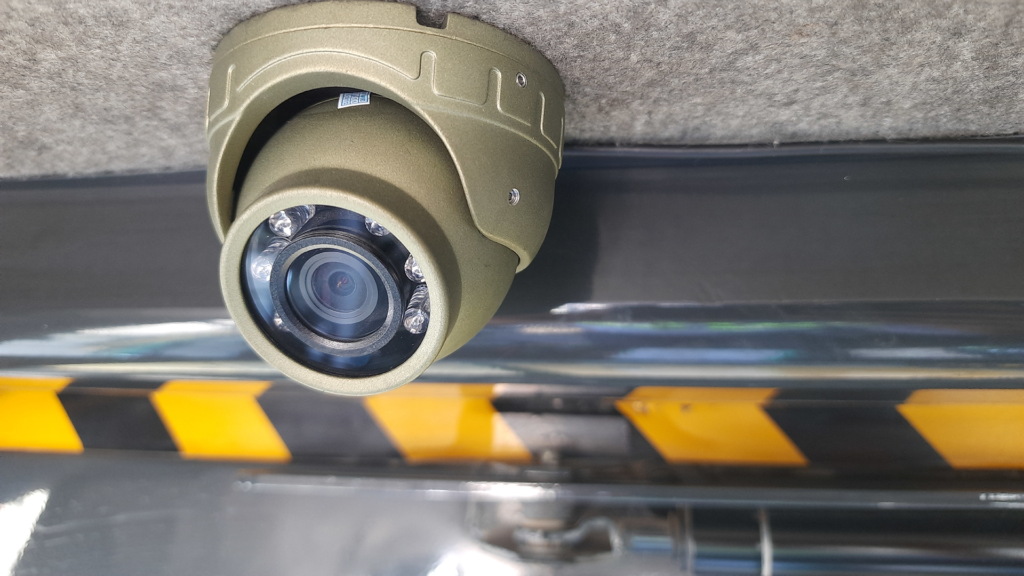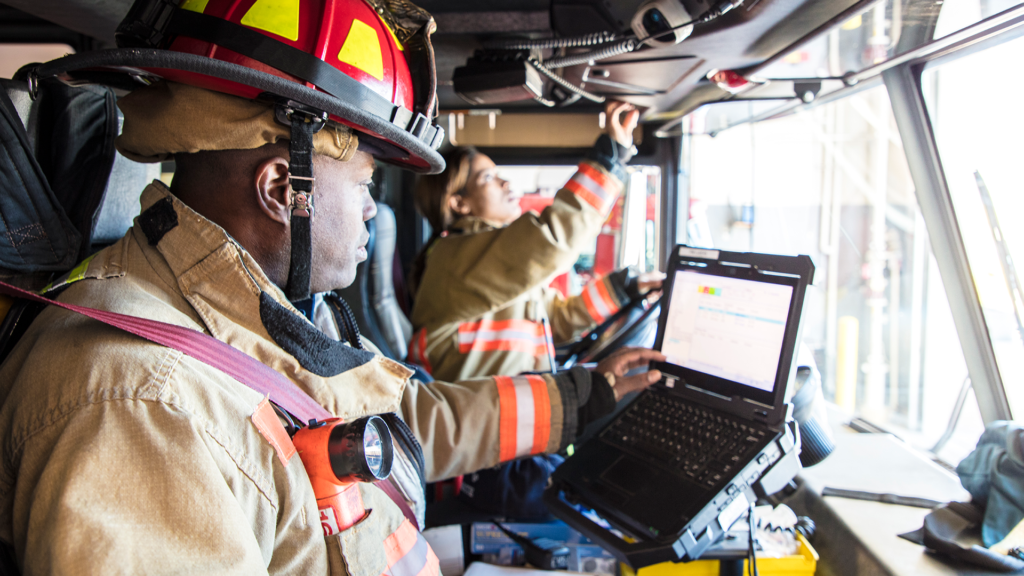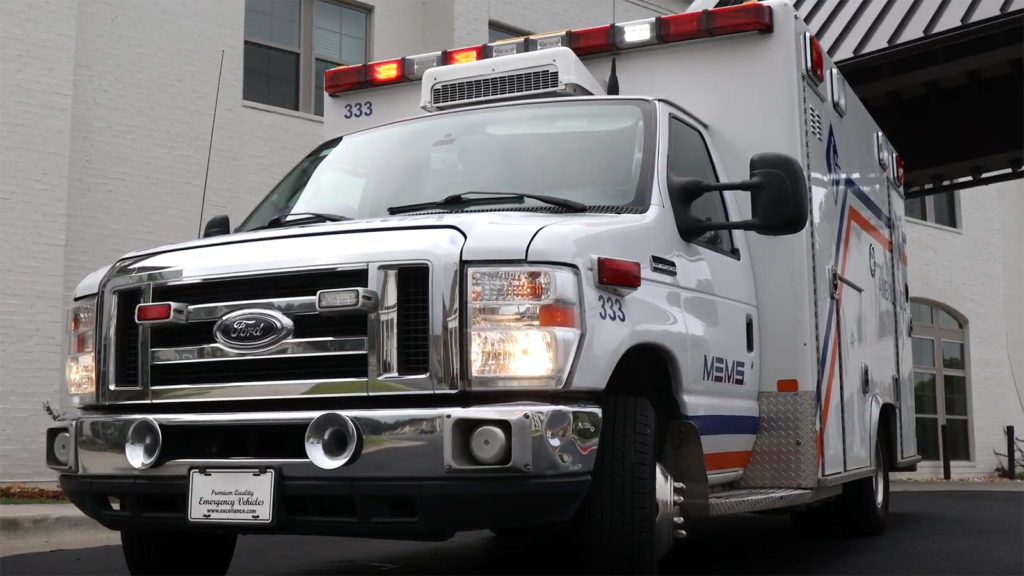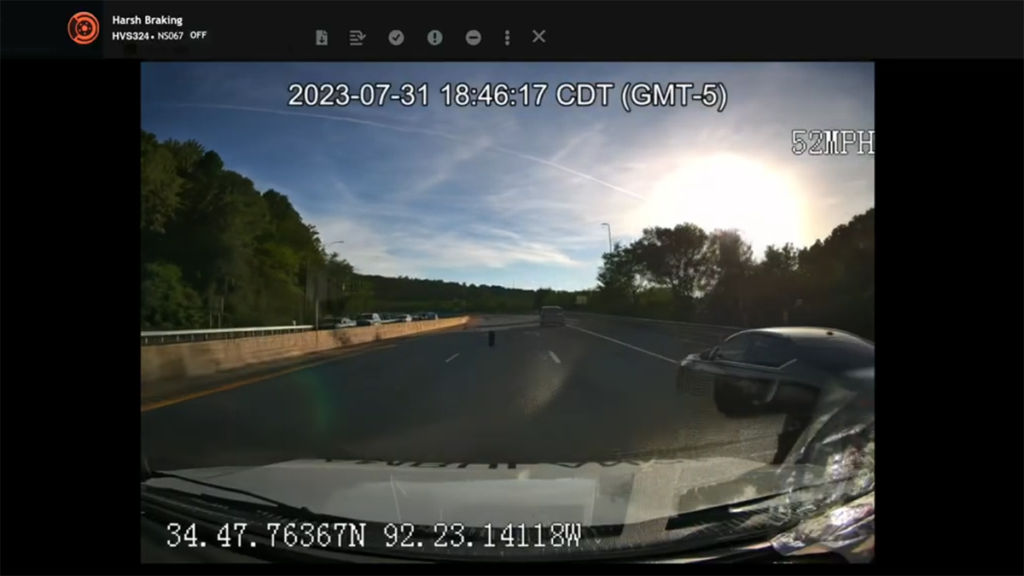The emergency response industry is changing. As our communities grow and the demands on first responders increase, the old ways of managing emergency fleets just don’t cut it anymore. The smartest departments are realizing that real improvement doesn’t come from small tweaks—it comes from completely rethinking how technology and people work together.
AI isn’t just another tech tool. Instead of just tracking where vehicles go, these systems are creating smart environments that actively protect the people who protect us. This isn’t just about better gadgets; it’s about a whole new way of thinking about safety when lives are on the line.
Modern emergency response demands complete visibility, and advanced fleet camera systems deliver in spades. Through multi-camera livestreaming, AI-powered event detection, built-in GPS tracking, and direct connections to the vehicle’s Engine Control Unit (ECU), advanced AI-powered dash cameras capture detailed insights into driver behavior, vehicle diagnostics, and environmental conditions.
These technologies don’t just record, they actively protect first responders by identifying risks and delivering real-time feedback. Rather than learning from mistakes after the fact, drivers receive immediate alerts about fatigue, distraction, or unsafe maneuvers during critical moments. This split-second intervention prevents accidents before they happen.

For emergency responders, visibility isn’t just convenient—it’s critical. A complete fleet camera system like FleetCam Pro gives your team up to six extra sets of eyes during high-pressure situations. Beyond standard road- and driver-facing cameras, fleet managers can livestream from up to six cameras, giving them real-time visibility into developing situations without radio congestion.
When dangerous driving events do occur—whether during a code-3 response or routine patrol—the system automatically captures and saves critical footage. When you need to review an incident, the high-quality video is already available in your browser—ready to watch. There’s no need to pull vehicles from service just to access the footage. And you can still download the video directly to your computer for long-term storage or to share it.
Every aspect of the system is built for the demanding world of emergency response. High-resolution cameras with night-vision capability ensure clear footage day or night, through smoke, rain, or darkness, and weatherproof exterior cameras hold up to even the most extreme conditions.
Inside the vehicle, cabin cameras document interactions with patients, suspects, or crew members, providing valuable documentation and protection for your personnel. Road-facing cameras capture exactly what your drivers see, offering crucial context for split-second decisions made during emergency responses. Additional cameras can be positioned wherever your specific operations require—monitoring equipment compartments on fire apparatus, patient areas in ambulances, or prisoner compartments in police vehicles.

Perhaps the most significant advancement is putting coaching tools directly in the hands of first responders. By reviewing their own footage and tracking their performance metrics, emergency drivers take ownership of their improvements, facilitating a natural shift toward a safety-focused culture.
AI dashcam systems support driver self-coaching through several key features that are particularly valuable in emergency settings. Drivers receive immediate audiovisual alerts for risky behaviors, such as following too closely or using a cellphone, allowing them to adjust in the moment and avoid potential accidents.
Video clips capture unsafe driving events connected to specific GPS data, generating a more accurate picture of the circumstances surrounding any event. Equipped with this information, safety managers and drivers can review footage for training and self-improvement. Through DriveShield, drivers can also acknowledge or dispute events, actively participating in the coaching process and ensuring a fair assessment of their performance.
Driver behaviors are measured with a comprehensive scoring system and displayed on their daily scorecard. The scorecard provides a detailed assessment that helps first responders understand their performance trends over time. This self-coaching model reduces the need for top-down reprimands and fosters a sense of accountability while recognizing the unique challenges of emergency driving situations.
This approach moves away from top-down criticism toward personal accountability and continuous improvement—perfectly aligned with the ethos already present in emergency services.

While protecting drivers remains the primary goal, these systems deliver substantial operational advantages. Between built-in GPS tracking and live video streams, command centers can see exactly what’s happening and which assets are on the scene to make more informed decisions about resource allocation.
Before emergency vehicles can be dispatched, they need to be functional and on the road. Early detection of mechanical issues can be the difference between a successful response and a critical failure. By connecting directly to the ECU through an OBD-II or JBUS port, fleet managers can continuously monitor diagnostic trouble codes and vehicle health. By identifying potential problems before they cause breakdowns, departments can schedule regular maintenance to ensure their fleets remain ready when seconds count.

The impact of these systems becomes most evident during high-pressure situations. When the driver’s head is nodding or eyes are fluttering during an 18-hour shift, the system detects fatigued or distracted driving and issues an audiovisual alert to wake up or focus on the road. This proactive intervention represents a fundamental shift from simply documenting accidents to actively preventing them.
These systems also provide protection when an incident does happen. Video evidence can protect both drivers and departments from false claims, offering objective documentation about the incident. And with multiple camera views, this coverage extends beyond the road. By monitoring an ambulance’s back door or inner compartment, first responders gain additional accountability when backing up or loading patients. Beyond just saving on insurance claims, this footage provides additional training opportunities to further improve performance.

As AI-powered dash cameras continue to advance, emergency services will see even more sophisticated applications. The integration of video data with other vehicle systems creates opportunities for deeper insights that improve both safety and operational efficiency. Future systems may predict mechanical failures before they occur, integrate seamlessly with emergency communication networks, and provide even more nuanced coaching tailored specifically to emergency response scenarios.
The most effective implementations position these systems as partnerships between responders and leadership rather than top-down monitoring tools. When emergency personnel recognize dash cameras as something that protects them, improves their skills, and potentially saves lives, resistance gives way to engagement.
At its core, this technology serves the fundamental mission of emergency services: Protecting both responders and the communities they serve. For departments considering implementation, success comes from emphasizing collaboration over control, creating not just safer vehicles but stronger, more confident emergency response teams.
To learn more about how Forward Thinking Systems is helping EMS companies improve safety, read our case study with Metropolitan Emergency Medical Services.
Recent Posts
Categories
Stay in Touch
Ready to make fleet management more manageable?